Raptors or birds of prey are some of the most remarkable animals on Earth. With powerful wings, razor-like talons, and sharp senses, these perfectly adapted hunters rule the skies as apex predators, inspiring us as they fulfill their role in maintaining balance in the earth’s ecosystems. However, they don’t start out that way — they begin life much like other species, helpless and completely dependent on their parents. Here are some amazing facts about baby hawks, along with some adorable pictures!
1. There Are Many Different Types of Baby Hawks
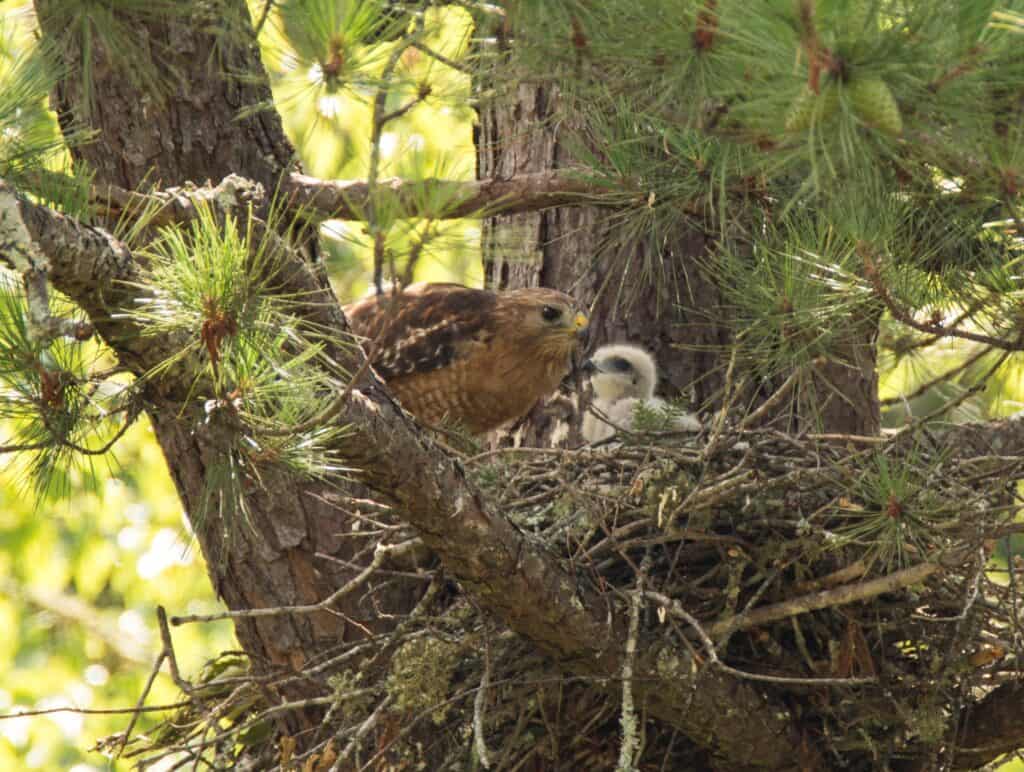
Most hawks lay between one and seven eggs in each clutch.
©Patricia Kuhn/Shutterstock.com
Baby hawks come in many different shapes and sizes and can be found all around the world except for Antarctica. As members of the family Accipitridae, these incredible birds of prey are scientifically categorized into two main groups: Accipitrinae and Buteo. Members of the Accipitrinae subfamily include accipitrine hawks or “true hawks”. This includes birds like sparrowhawks, sharp-shinned hawks, Cooper’s hawks, and goshawks.
Hawks in the Buteo group, on the other hand, have larger bodies and broader wings. This group includes hawks like ferruginous hawks, Swainson’s hawks, red-tailed hawks, and red-shouldered hawks. Sometimes you may hear Buteo hawks referred to as “buzzards” as well.
What makes this even more confusing, is that there are a few birds that people refer to as hawks, but they aren’t hawks at all! For example, some people call the peregrine falcon a “duck hawk” or an osprey a “fish hawk”. However, neither of these birds is actually a hawk!
2. Some Baby Hawk Species Are in Danger of Extinction
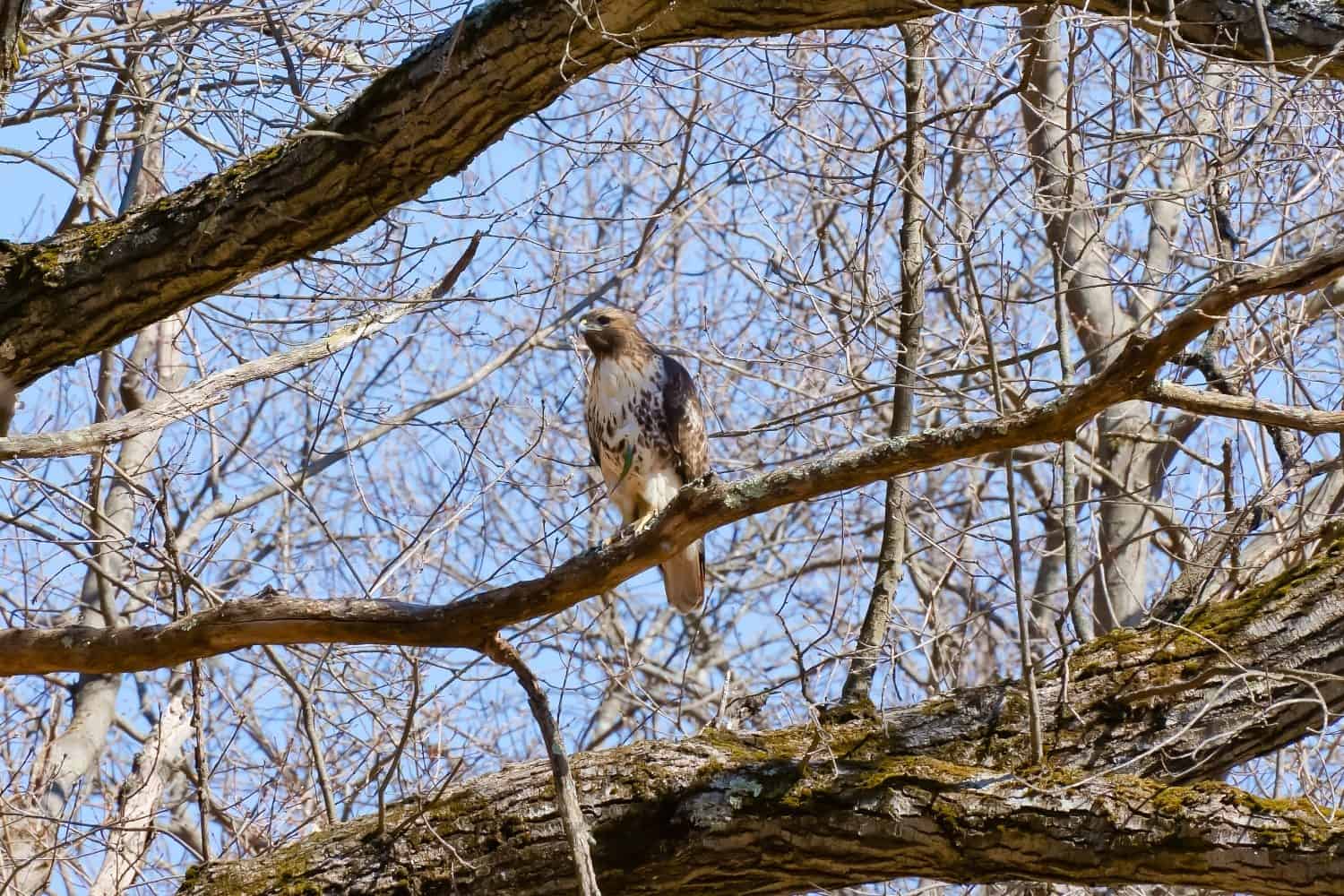
Ridgway’s hawks only live in the Caribbean on the island of Hispaniola.
©Yingna Cai/Shutterstock.com
Unfortunately, many species of hawks are in danger of extinction as their populations continue to dwindle in the wild. Ridgway’s hawk (Buteo ridgwayi), for example, is the most critically endangered hawk species today. Sadly, there are less than 500 left in the wild. The gray-backed hawk is also endangered, and the white-necked hawk (Buteogallus lacernulatus) is a vulnerable species. Other hawks, like the Hawaiian hawk or ‘io (Buteo solitarius) and the rufous crab hawk (Buteogallus aequinoctialis) are near-threatened species.
Sadly, the main threat to these beautiful birds of prey is humans, particularly habitat destruction. In addition, they suffer from hunting, pesticide poisoning, and climate change. Losing these unique species is not only tragic but can be detrimental. Hawks are vital members of the ecosystem and play a crucial role in keeping small animal populations balanced.
3. A Baby Hawk Is Called an Eyas

The term “eyas” came from a mistaken translation of an Anglo-French word hundreds of years ago!
©Luka Hercigonja/Shutterstock.com
Although some people refer to them as “hatchlings”, “hawklets”, or “chicks”, the technical term for a baby hawk is an “eyas”. Eyas means “nestling” or “baby”, originating from the Middle English “a nis”. The term eyas is most frequently used in the ancient sport of falconry, wherein human falconers train hawks from a young age to hunt with them.
Baby hawks are called eyasses until they fledge, which is when they leave the nest. Once out of the nest, baby hawks are referred to as “fledglings” until they are fully grown. However, even after fledging, baby hawks stick around the nest for a few more weeks, receiving nurturance and protection from their parents.
4. Baby Hawks Are Born High Above the Ground
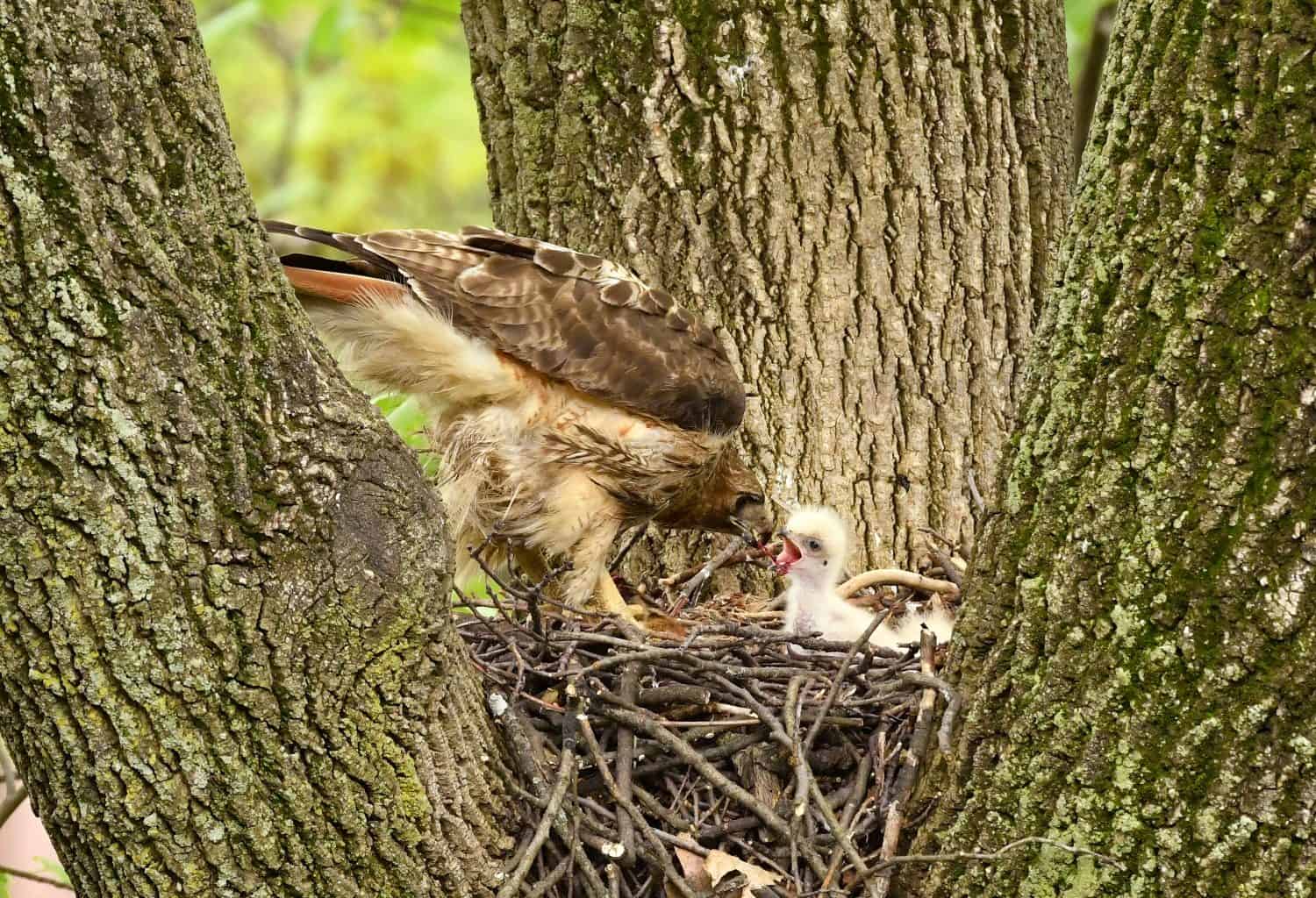
Usually, hawks use small twigs and sticks 2 inches or less in diameter for their nests.
©Breck P. Kent/Shutterstock.com
Hawk nests are called “eyries”, and most are built high up in trees. However, some hawks will also choose to build their nests on rocky outcroppings, along cliffs, on transmission towers or billboards, and even on tall buildings. A good nesting spot is one that provides an excellent vantage point, allowing the hawk parents to be able to see everything around them. Sometimes hawks will build their nests as far up as 100 feet off the ground!
Hawks use twigs, small sticks, and other plant materials to build their large nests. They also line them with softer items like pine needles, feathers, grass, and leaves. Depending on the species, hawk nests may be shaped like an enormous bowl, or like a platform. Hawk nests often look a lot like eagles’ nests, but they are not nearly as massive. In addition, hawks use much smaller and thinner sticks than eagles do.
5. Baby Hawks Are Featherless and Completely Helpless at Birth

Baby hawks hatch with their eyes closed.
©Katelin Johnson/Shutterstock.com
Female hawks typically lay one to five eggs in a clutch and incubate them for around 28 to 35 days. When the baby hawks hatch, they do not have any feathers. Instead, baby hawks are covered with a unique fluffy down, which looks like a fuzzy or cottony covering all over their bodies.
Baby hawks are tiny when they first hatch, usually just a few inches long! In addition, they are “altricial”, which means that they are weak and fully rely on their parents to care for them. Not only do their parents hunt and bring back food for the baby hawks, but they even rip the food into small, bite-sized pieces with their sharp talons and beaks!
6. Baby Hawks Have Extremely Devoted Parents
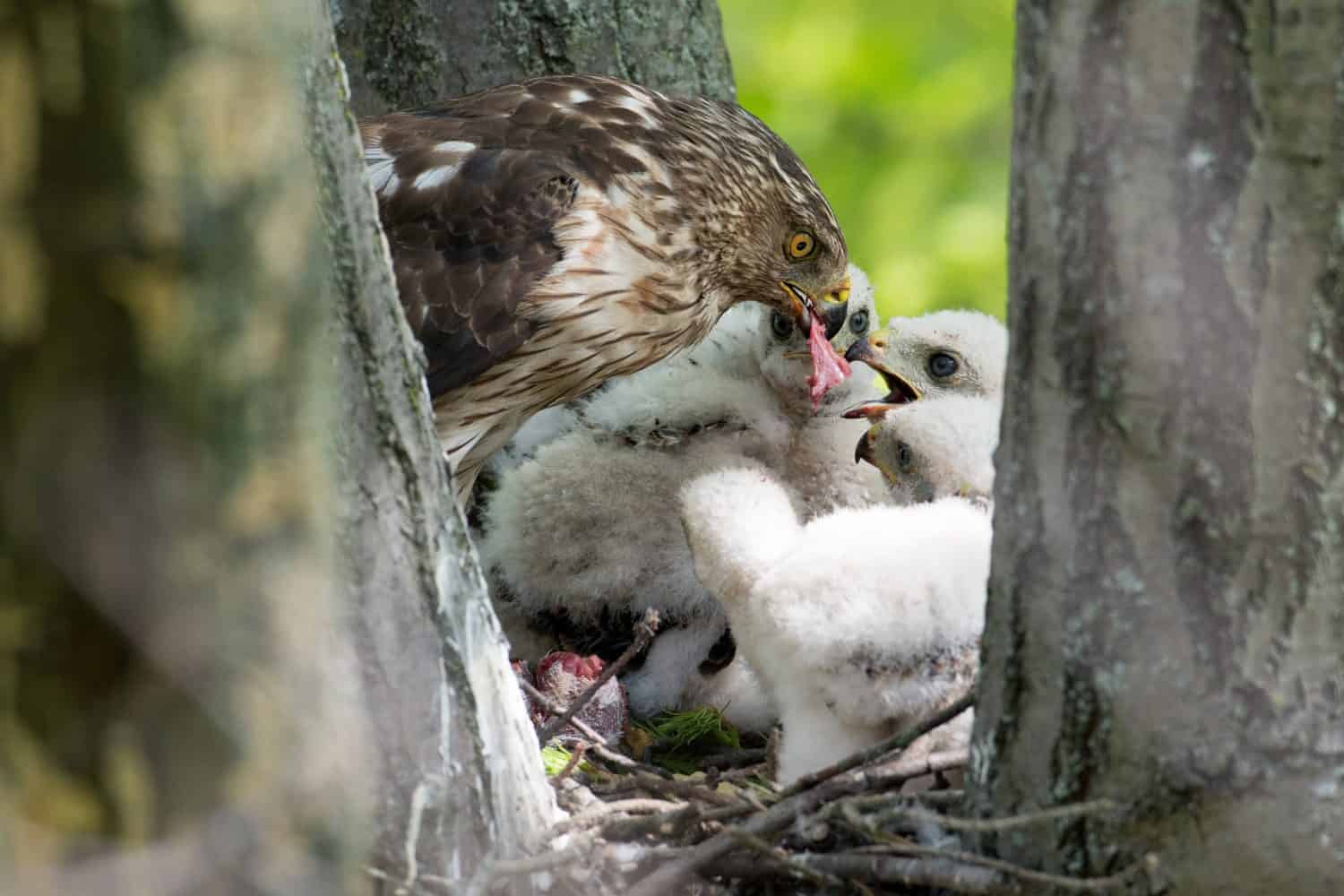
Baby hawks cannot eat on their own for the first few weeks of life.
©Tony Campbell/Shutterstock.com
Both male and female hawks are extremely devoted parents, and both stick around to care for their eggs and young babies. Some hawk species are monogamous, which means that they only have one partner and mate for life. New hawk parents will also work together to help build a nest, usually before it is time to mate.
Once the new hawk babies have hatched, both parents take turns hunting and bringing them food. Many hawks also protect their young, defending their nesting area and even attacking other birds if they come near their nests. After baby hawks have fledged or left the nest, they are still not quite prepared to live on their own. So, their parents continue to watch over them and help them find food until they are older and ready to hunt for themselves.
7. Fledging Can Take a Long Time
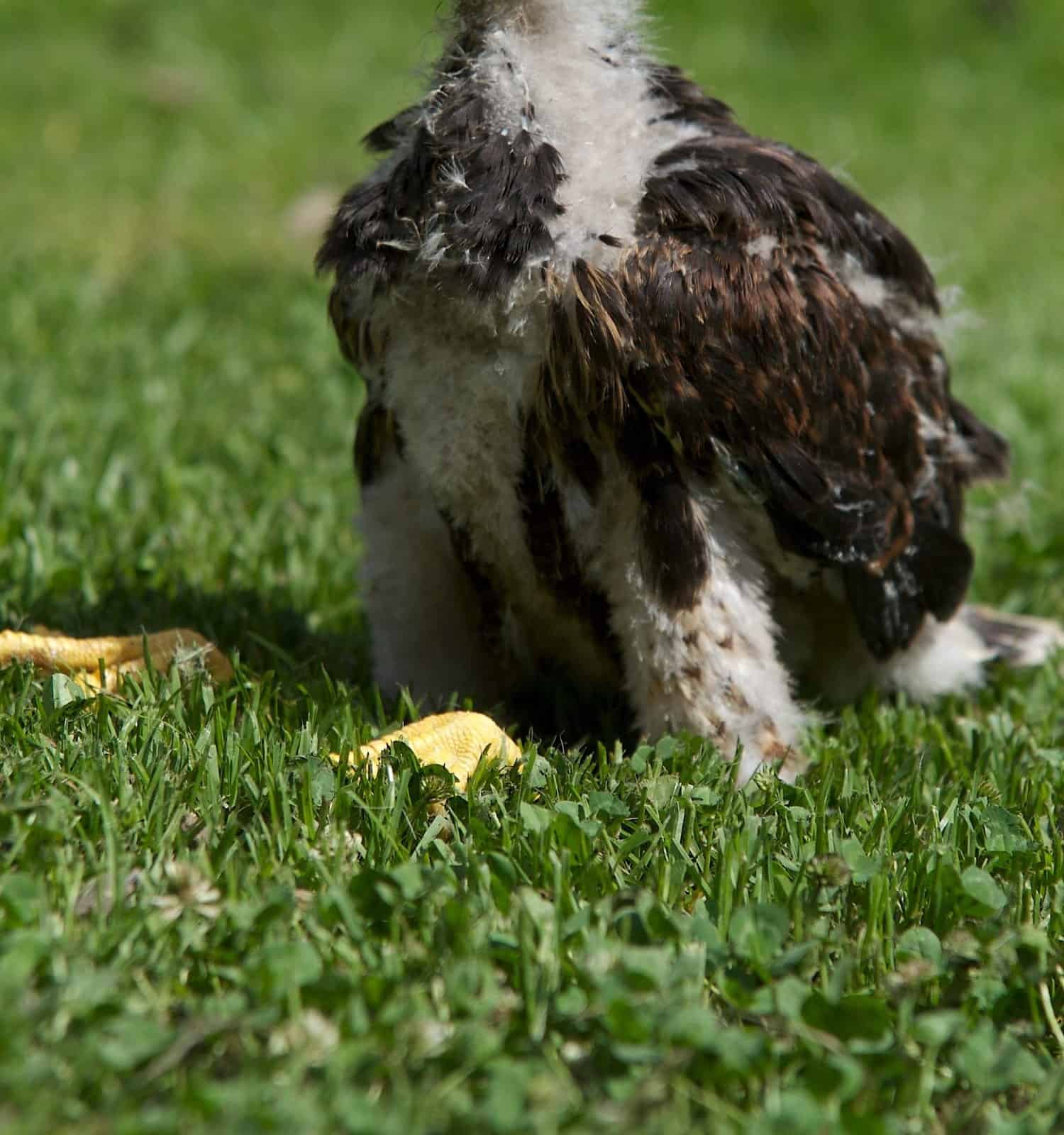
Even after fledging, it takes a long time for a baby hawk to get all its flight feathers.
©Cornelius Fischer/Shutterstock.com
Some hawks, like the Cooper’s hawk, fledge when they are only 27 to 32 days old, although they stay close to the nest for two to three more weeks. Other hawks, however, take much longer to leave the nest. Red-tailed hawks, for example, don’t fledge until they’re around 42 to 46 days old.
After they fledge, baby hawks — now “fledglings” — usually spend a few more weeks with their parents, continuing to grow stronger and learn how to fly and hunt on their own.
8. Some Baby Hawks Are Surprisingly Social
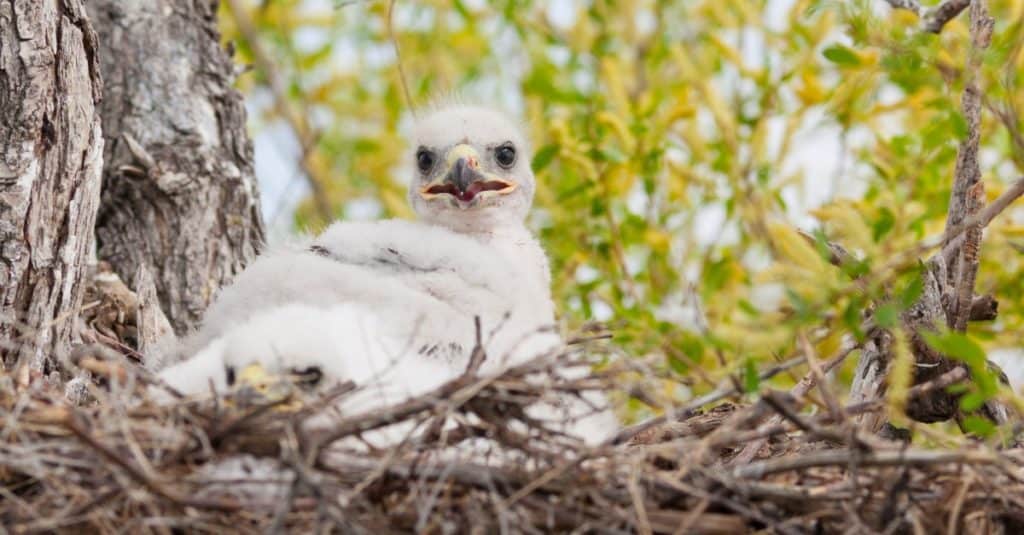
Hawks tend to be solitary and only gather to mate and raise their young.
©Brenda Carson/Shutterstock.com
Most hawk species are solitary, and even those who are monogamous do not tend to socialize with other birds. Harris hawks (Parabuteo unicinctus), however, are quite unique and have extremely active social lives!
Living in family groups with up to seven birds, Harris hawks have complex social hierarchies and are one of the only hawks that cooperatively hunt together in groups. The group also helps signal each other if there are predators around. Occasionally, Harris hawks even practice “backstacking”. When there aren’t enough perches for the group, hawks will actually perch on top of each other’s backs! Although it’s more common for just one hawk to stand on top of another, sometimes Harris hawks will have up to a four-bird stack-up!
In addition, Harris hawks also have remarkably cooperative behavior during the nesting process. Instead of leaving the nest as soon as they are independent, many young Harris hawks stick around for up to three years. During this time, they help their parents raise the next brood of baby hawks!
The photo featured at the top of this post is © Luka Hercigonja/Shutterstock.com
Thank you for reading! Have some feedback for us? Contact the AZ Animals editorial team.







